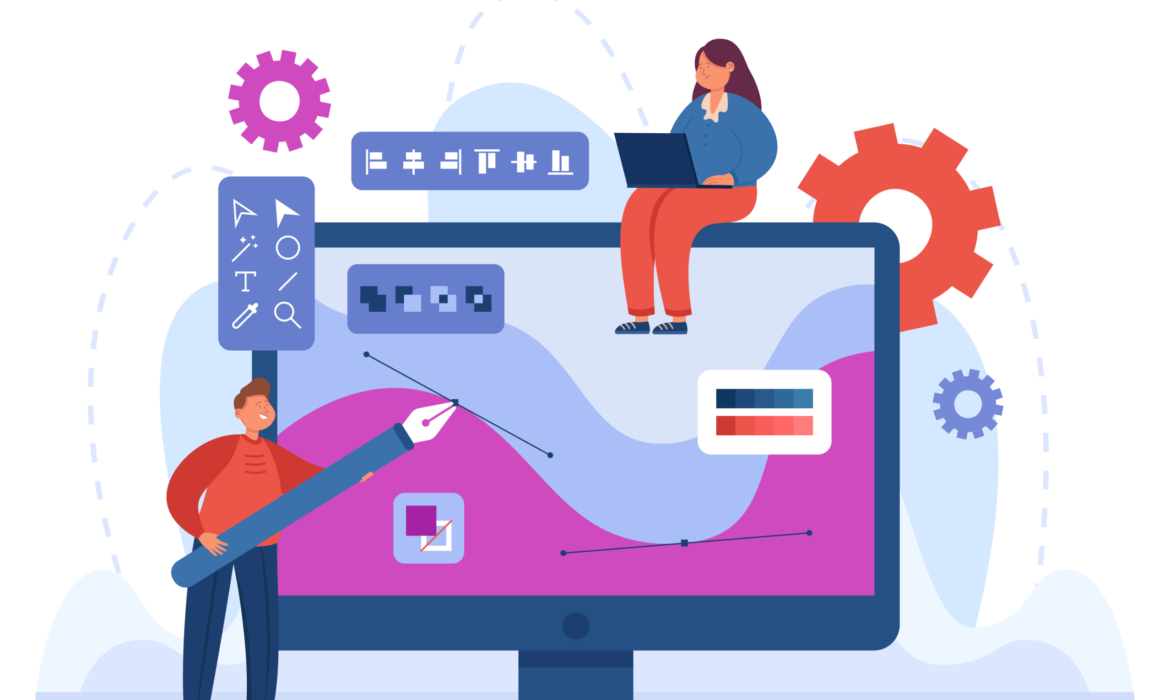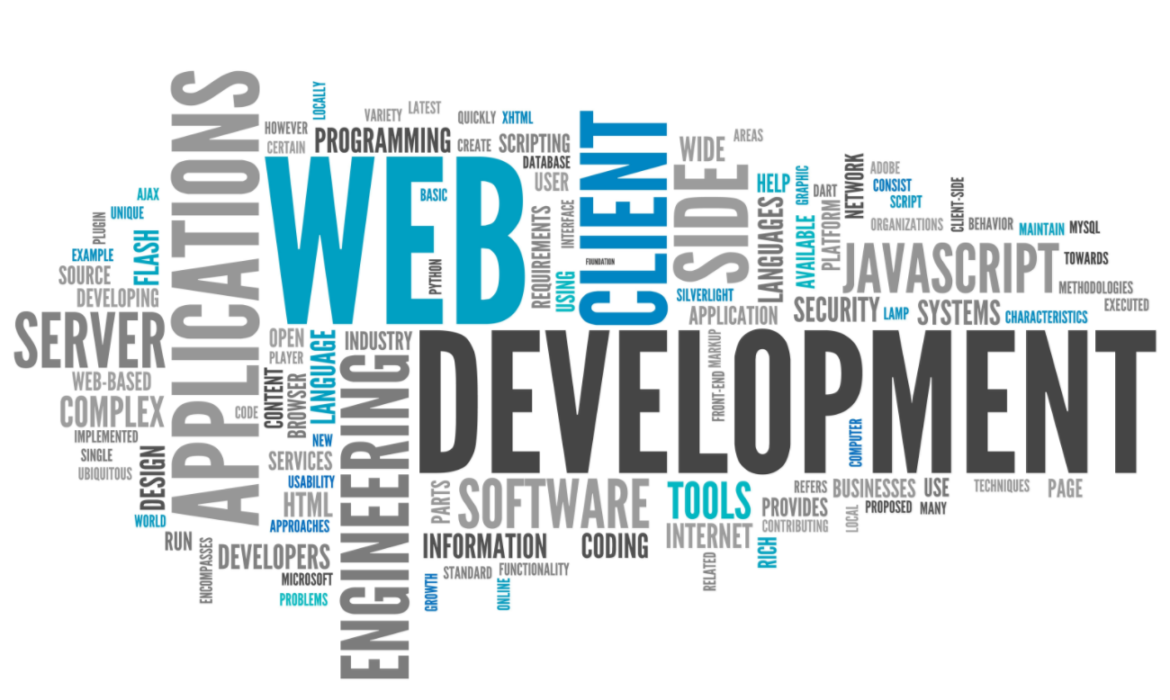Web Development Trends for 2024: What’s Next for Web Development?
Introduction
The dynamic landscape of web development is constantly evolving, with new trends and technologies emerging at an unprecedented pace. As we approach 2024, it’s crucial for web developers to stay ahead of the curve and embrace the innovations that are shaping the future of the web. This blog post delves into the top web development trends that are poised to transform the way we build and interact with websites and web applications in the coming year.
1. AI-Powered Web Experiences: The Rise of Intelligent Interfaces
Artificial intelligence (AI) is rapidly permeating various industries, and web development is no exception. In 2024, AI will play an increasingly prominent role in creating intelligent and personalized web experiences. Expect to see:
AI-Powered Chatbots and Virtual Assistants: AI-powered chatbots and virtual assistants will become more sophisticated, providing natural language interactions, proactive customer support, and personalized recommendations.
AI-Driven Content Generation: AI algorithms will be used to generate personalized content, such as product descriptions, blog posts, and marketing copy, tailoring the content to individual user preferences and interests.
AI-Enhanced Search and Navigation: AI will empower search functions, enabling more intuitive and context-aware search results, and personalized navigation paths based on user behavior.
2. Serverless Architecture: Unleashing Scalability and Agility
Serverless architecture is gaining traction as a preferred approach for building web applications. This cloud-based model eliminates the need for developers to manage servers, allowing them to focus on core application logic. In 2024, serverless adoption is expected to accelerate due to its:
Scalability and Cost-Effectiveness: Serverless architecture scales automatically based on demand, eliminating the need for provisioning and managing servers, reducing infrastructure costs.
Agility and Rapid Deployment: Serverless enables faster development and deployment cycles, as developers can focus on writing code without worrying about server infrastructure.
Enhanced Security: Serverless providers handle server security, reducing the burden on developers and improving overall application security.
3. Progressive Web Apps (PWAs): Bridging the Gap Between Web and Mobile
Progressive Web Apps (PWAs) are revolutionizing the way web applications are experienced on mobile devices. PWAs offer native-like app features, such as offline access, push notifications, and app-like installation, providing a seamless user experience across devices. In 2024, PWAs are expected to gain even wider adoption due to their:
Enhanced User Experience: PWAs offer faster loading times, smoother interactions, and offline capabilities, improving user engagement and satisfaction.
Improved App Discoverability: PWAs can be installed directly from the browser, increasing app discoverability and reducing friction for users.
Cross-Platform Compatibility: PWAs work seamlessly across various browsers and devices, eliminating the need for platform-specific development.
4. Motion UI and Microinteractions: Enhancing User Engagement
Motion UI and microinteractions are becoming increasingly popular design trends, adding subtle animations and interactive elements to enhance user engagement and provide a more delightful user experience. In 2024, expect to see:
Creative Use of Animations: Animations will be used to guide users through interfaces, provide feedback on actions, and create a more dynamic and engaging experience.
Interactive Microinteractions: Subtle microinteractions, such as hover effects, transitions, and response to user input, will add polish and refinement to user interfaces.
Storytelling Through Motion: Motion UI will be used to tell stories, convey emotions, and create a more immersive user experience.
5. Cybersecurity: A Top Priority in Web Development
As web applications become more sophisticated and handle sensitive user data, cybersecurity remains a paramount concern for web developers. In 2024, expect to see a continued focus on:
Front-End vs. Back-End Development: Understanding the Differences
Introduction
In the dynamic realm of web development, two fundamental disciplines work in harmony to bring websites and web applications to life: front-end development and back-end development. While often misunderstood as interchangeable terms, they represent distinct yet complementary phases of the development process.
Front-End Development: The User Interface Maestro
Front-end development takes center stage, crafting the visual elements and interactive experiences that users directly engage with. It’s the art of transforming ideas into captivating interfaces that captivate users and guide them through their digital journey.
Responsibilities of a Front-End Developer:
HTML: The foundation of web pages, defining content and structure.
CSS: Controls the visual presentation, including colors, fonts, and layouts.
JavaScript: Adds interactivity, animations, and dynamic behavior.
JavaScript Frameworks: Utilize frameworks like React, Angular, or Vue.js to build complex user interfaces.
საპასუხო დიზაინი: Ensure websites adapt seamlessly to different screen sizes and devices.
Essential Skills for Front-End Developers:
Creativity and User Experience (UX) Focus: Understand user needs and translate them into intuitive interfaces.
Proficiency in HTML, CSS, and JavaScript: Master the core building blocks of web pages and user interactions.
JavaScript Framework Expertise: Learn at least one popular JavaScript framework for building complex UIs.
Responsive Design Principles: Understand how to create websites that adapt to various screen sizes.
Back-End Development: The Powerhouse Behind the Scenes
Back-end development delves into the server-side machinery, handling data storage, user authentication, and communication with databases. It’s the backbone that powers the website’s functionality, ensuring seamless data management and secure operations.
Responsibilities of a Back-End Developer:
Choose a Programming Language: Select a suitable language like Python, Java, PHP, or Node.js for server-side development.
Design and Implement APIs: Create Application Programming Interfaces (APIs) to enable communication between the front-end and back-end.
Database Management: Store, retrieve, and manipulate data using databases like MySQL, PostgreSQL, or MongoDB.
Security Implementation: Implement security measures to protect user data and prevent unauthorized access.
Server Administration: Manage servers, ensuring uptime, performance, and scalability.
Essential Skills for Back-End Developers:
Problem-Solving and Analytical Thinking: Break down complex problems and design efficient solutions.
Proficiency in a Back-End Programming Language: Master at least one server-side programming language.
Database Management Skills: Understand database concepts, data modeling, and SQL queries.
Security Awareness: Stay updated on security threats and implement effective protection measures.
Server Administration Expertise: Manage servers, optimize performance, and ensure scalability.
Full-Stack Development: The Fusion of Front-End and Back-End Expertise
Full-stack developers possess the rare ability to bridge the front-end and back-end divide, wielding expertise in both domains. They can seamlessly navigate the entire development process, from crafting user interfaces to building robust server-side systems.
Skills Required for Full-Stack Development:
Mastery of Front-End and Back-End Technologies: Proficient in both front-end languages (HTML, CSS, JavaScript) and back-end languages (Python, Java, PHP, Node.js).
Full-Stack Frameworks: Expertise in frameworks like Ruby on Rails or Django that cater to both front-end and back-end development.
System Design and Architecture: Understand how to design and implement scalable and maintainable web applications.
Choosing the Right Programming Languages for Web Development: A Comprehensive Guide
Introduction
The realm of web development is a vibrant tapestry woven from a multitude of programming languages, each with its unique strengths and characteristics. Selecting the right languages for your web development projects is crucial for ensuring efficiency, maintainability, and scalability. This guide delves into the factors to consider when making these critical choices.
Front-End vs. Back-End Development: Language Considerations
Front-End Development: Focuses on the user-facing aspects of a website, primarily utilizing languages like:
HTML: The foundation of web pages, defining content and structure.
CSS: Controls the visual presentation, including colors, fonts, and layouts.
JavaScript: Adds interactivity, animations, and dynamic behavior.
Back-End Development: Handles server-side logic and functionality, commonly employing languages like:
Python: Versatile and beginner-friendly, with frameworks like Django and Flask.
Java: Robust and scalable, popular for enterprise applications.
PHP: Widely used for dynamic websites and content management systems (CMS).
JavaScript: Node.js enables back-end development using JavaScript.
Full-Stack Development: Encompasses both front-end and back-end expertise, often utilizing languages like:
JavaScript: Frameworks like React, Angular, and Vue.js provide a unified front-end and back-end approach.
Python: Django and Flask offer full-stack capabilities.
Factors Influencing Programming Language Choice
Project Requirements: Consider the project’s nature, complexity, and performance demands.
Developer Skills and Experience: Choose languages that align with your existing skills and comfort level.
Language Popularity and Community Support: Popular languages often have extensive documentation, libraries, and community support.
Learning Resources: Ensure the availability of learning resources, tutorials, and online courses for the chosen languages.
Popular Programming Languages for Web Development
Front-End Languages
HTML: Essential for all web development projects.
CSS: Versatility and widespread adoption make it a must-have.
JavaScript: Interactive web experiences and dynamic user interfaces.
Back-End Languages
Python: Beginner-friendly, versatile, and widely used.
Java: Robust, scalable, and popular for enterprise applications.
PHP: Mature language, ideal for dynamic websites and CMS.
JavaScript: Node.js enables back-end development using JavaScript.
Full-Stack Languages
JavaScript: Frameworks like React, Angular, and Vue.js offer a unified approach.
Python: Django and Flask provide full-stack capabilities.
Conclusion
Choosing the right programming languages for web development is an informed decision that considers project requirements, developer skills, language popularity, and available resources. By carefully evaluating these factors, you can select the languages that empower you to build high-quality, performant, and maintainable web applications. Remember, the web development landscape is constantly evolving, so stay updated on emerging languages and technologies to enhance your skillset and expand your development horizons.
Call to Action:
Ready to embark on your web development journey with the right programming languages?
Our team of experienced web developers can guide you through the language selection process, taking into account your project’s specific needs and your personal preferences. We’ll help you assess your skillset, identify suitable languages, and provide personalized learning recommendations to ensure you have the right tools to succeed in the ever-evolving world of web development. Contact us today to unlock your web development potential!
Web Development Basics: A Comprehensive Guide for Beginners
Introduction to Web Development
Web development encompasses the skills and techniques involved in creating and maintaining websites. It’s a dynamic and ever-evolving field that encompasses a wide range of tasks, from designing user interfaces to building complex web applications.
Essential Web Development Languages
Three core languages form the foundation of web development:
HTML (HyperText Markup Language): Defines the structure and content of web pages using tags and elements.
CSS (Cascading Style Sheets): Controls the visual presentation of web pages, including colors, fonts, and layouts.
JavaScript: Adds interactivity and dynamic behavior to web pages, enabling user actions and animations.
Front-End vs Back-End განვითარება
Web development can be broadly divided into two main areas:
Front-End Development: Focuses on the user-facing aspects of a website, including the design, layout, and interactivity.
Back-End Development: Deals with the server-side logic and functionality of a website, handling data storage, user authentication, and communication with databases.
Full-Stack Development
Full-stack developers possess expertise in both front-end and back-end development, enabling them to build complete web applications from scratch.
Building a Website: A Step-by-Step Guide
Planning and Design: Define your website’s purpose, target audience, and desired features. Create wireframes and mockups to visualize the layout and design.
HTML Structure: Start by creating the basic HTML structure of your website, defining the main sections, headings, and content elements.
CSS Styling: Apply CSS styles to enhance the visual appearance of your website, including colors, fonts, layouts, and responsiveness.
JavaScript Interactivity: Add JavaScript code to introduce dynamic elements, such as user interactions, animations, and form validation.
Testing and Deployment: Thoroughly test your website across different browsers and devices before deploying it to a live server.
Resources for Learning Web Development
Online Tutorials: Numerous online tutorials and courses offer a structured approach to learning web development basics.
Interactive Coding Platforms: Practice coding in real-time using interactive platforms that provide feedback and challenges.
Books and Documentation: Refer to comprehensive books and official documentation to gain in-depth knowledge of web development concepts.
Online Communities: Engage with online communities of web developers to seek guidance, share knowledge, and collaborate on projects.
Conclusion
Web development offers a rewarding and challenging career path, enabling you to create innovative and impactful digital experiences. By mastering the fundamentals of HTML, CSS, and JavaScript, you’ll lay the groundwork for a successful journey into the world of web development. Remember, web development is a continuous learning process, so stay curious, explore new technologies, and never stop expanding your skillset.
Call to Action:
Ready to embark on your web development journey and build your first website?
Our team of experienced web developers can guide you through the process, providing personalized instruction and support tailored to your learning style. We’ll help you grasp the essential concepts, develop hands-on coding skills, and create a website that showcases your newfound knowledge and creativity. Contact us today to take the first step towards becoming a proficient web developer!









